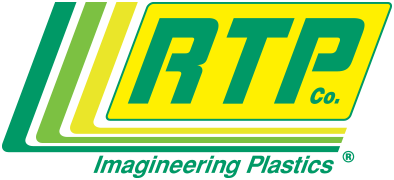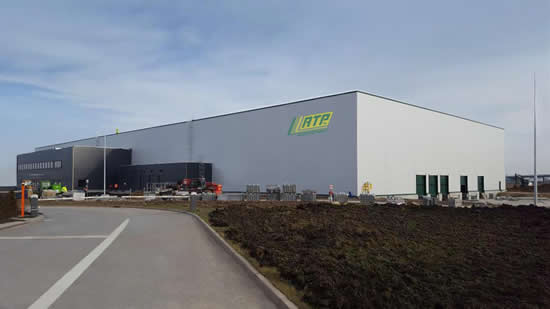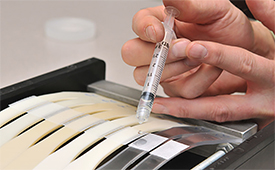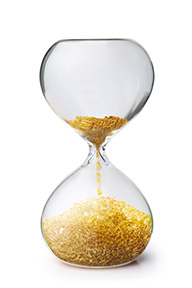- While most elastomers (RTP Series 1200, 1500, 2700 and 2800) by themselves require low barrel and mold temperatures, overmolding onto rigid materials sometimes requires higher temperatures. If the flowing elastomer is not hot enough to soften the rigid substrate at the time of injection, the probability of adequate adhesion between the two is significantly decreased. Preheating the rigid insert may help alleviate the adhesion problem. Our technical service specialists can work with you to resolve a wide range of molding concerns.
- In electrostatic painting application, the molded part needs to be as smooth as possible and free of flaws. RTP Company engineers can develop a formulation that buries fillers such as carbon fiber and glass fiber so the part has a resin-rich surface. We can pinpoint a balance between a static dissipative surface and a resin rich surface to help you achieve optimum results with electrostatic painting.
- RTP Company has additives and pigments that can be incorporated into plastics to absorb harmful IR (infrared) radiation. These transparent compounds are useful in applications such as filters and lenses for sunglasses and welders’ goggles, or in protection against laser beams.
- Burning behavior of compounded thermoplastics is not just a material characteristic. It is also dependent on the shape and wall thickness of the application. In the U.S., testing is carried out according to Underwriters Laboratories using these classifications:
- UL 94 HB (least stringent)
- UL 94 V (V-0 has best flammability followed by V-1 and V-2)
- UL 95 5V (most stringent; includes 5VA and 5VB)
In Europe, flammability is tested using Glow Wire Tests according to IEC 695-2-1 and/or the Needle Flame test according to IEC 695-2-2.
- Compounds containing carbon- or metal-based additives (carbon powder and fiber, metal powder and fiber, metal-coated substances) have permanent conductivity. As long as the plastic part survives, the conductive additive will remain.
